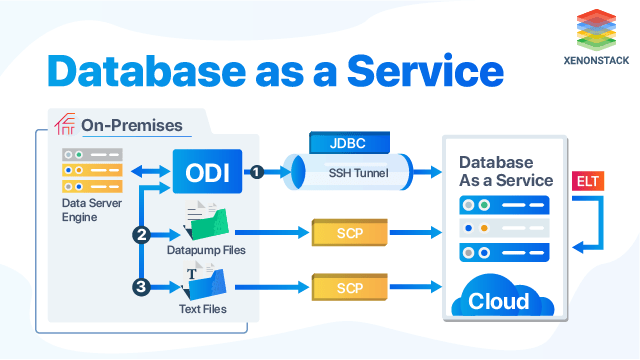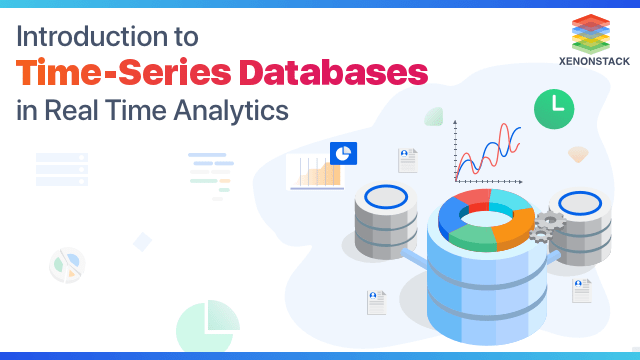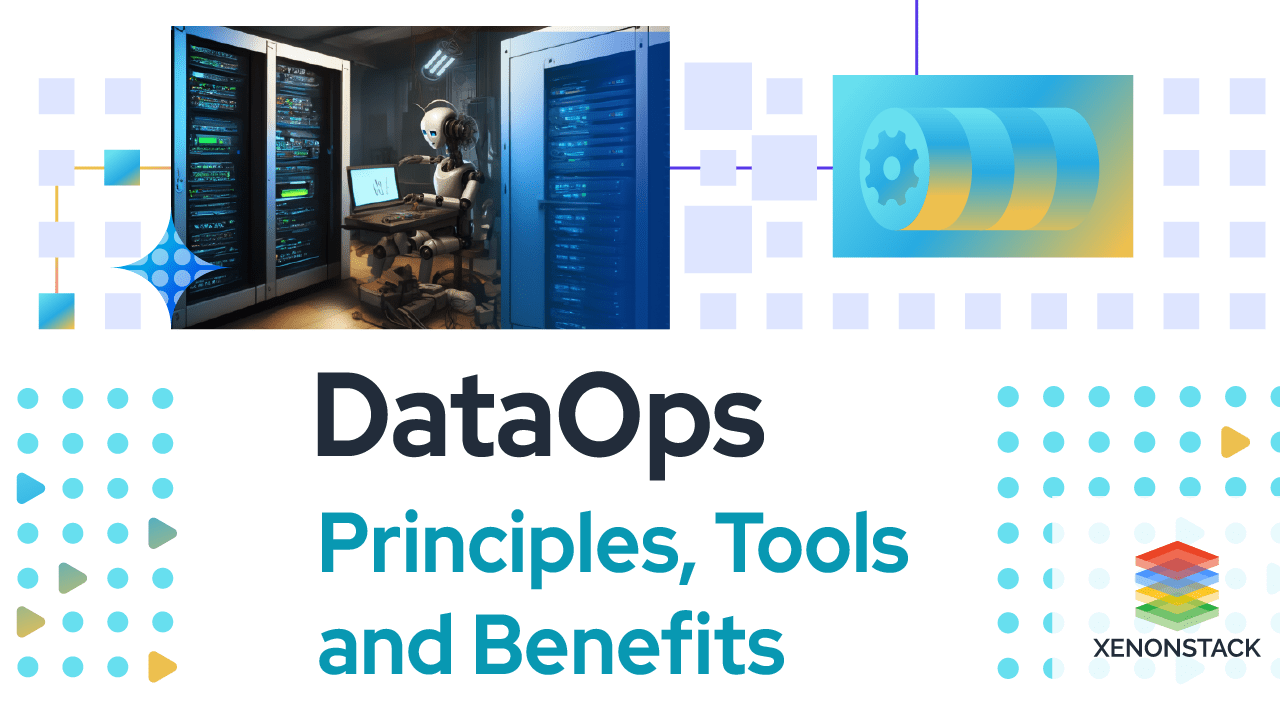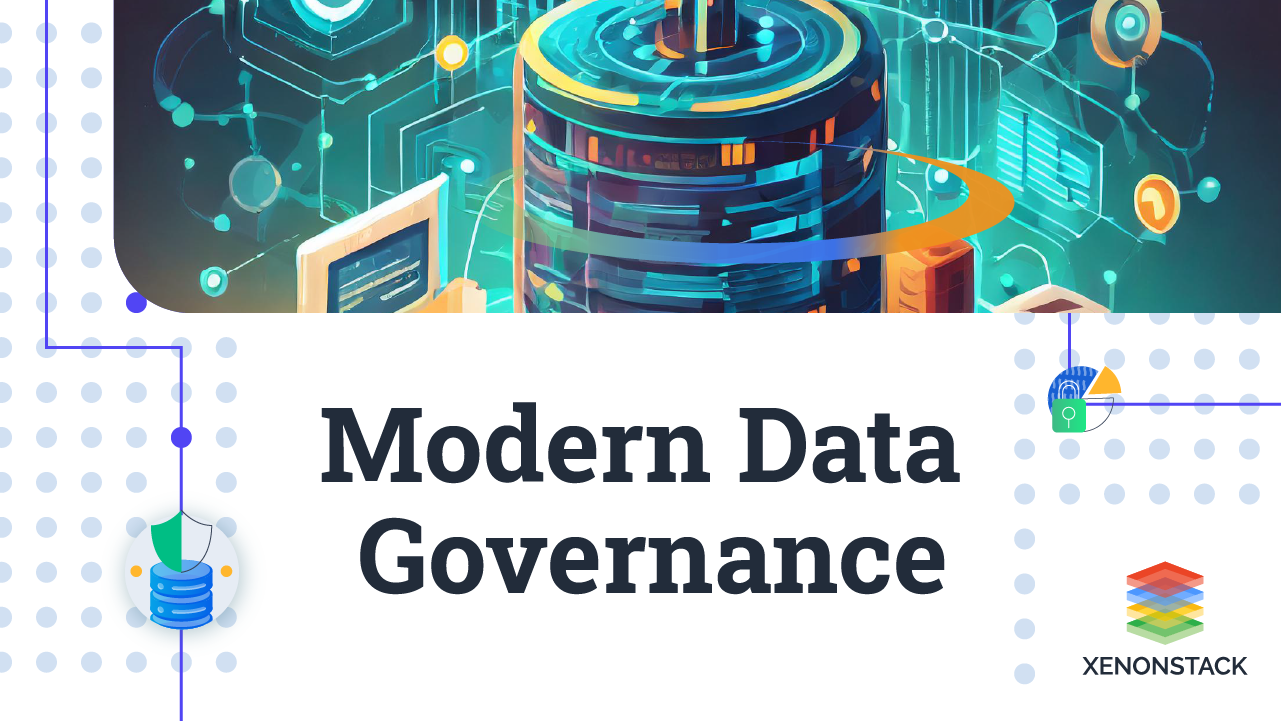
What is Database-as-a-Service?
DBaaS(Database as a service) is a cloud computing managed service offering model that enables users to set up, operate, manage and scale with some form of access to a Database without the need for setting it up on physical hardware, installing software, or configuring it for performance, Database management by themselves.
It has come up as a wonderful approach that extends the capabilities of the Private Cloud by Increasing Quality of Service, Faster Deployment, Providing Resource Elasticity, Rapid Provisioning. Moreover, DBaaS in Enterprise Manager is implemented by four options, which are: Virtual Machine based, Shared Cluster, Shared installation, Shared Database. Not only this, delivery model selection is the necessary step that best satisfies the intended use of Database services before you implement DBaaS.
| Explore the List of different Databases |
- Amazon Amazon Aurora DynamoDB Amazon RDS SimpleDB
- Google Cloud GC Bigtable Google Cloud Datastore GC Spanner Google Cloud SQL
- Microsoft Azure Microsoft SQL Database MA Table Storage Microsoft DocumentDB
- Compose (IBM)
- IBM Cloudant
- MongoDB Atlas
- Oracle Database Cloud Service
Key Characteristics of DBaaS
A fully managed Database service helps to set up, manage, and administer your Database in the cloud and also provide services for hardware provisioning and Backup.
Below are the six essential factors for choosing DBaaS providers:- Self-service: DBaaS allows the provision of Databases effortlessly to Database consumers from various backgrounds and IT experience.
- On-demand - While generating overall IT savings, You pay for what you use.
- Dynamic: Based on the resources available, it delivers a flexible Database platform that tailors itself to the environment's current needs.
- Security - A team of experts at your disposal, continuously monitoring your Databases.
- Automation: Automates Database administration and monitoring.
- Leverage: Leverages existing servers and storage.
The necessity of a Database
Databases are generally available in two forms, namely: SQL and NoSQL. SQL (i.e., Search Query Language) is a programming language used to build many Databases. It's useful in many use cases—critical even, depending on the work done—though it lacks the flexibility needed for many situations. SQL creates hard yet dependable Databases.
A NoSQL Database like MongoDB is more flexible and can make changes instantaneously, making it feasible for the queries and information responses to be situational. However, NoSQL may not be suitable all the time, yet instances that require adaptability for managing Databases that arise from a wide variety of unique sources and manipulating the data in useful ways.
DBaaS offerings include integrated management tools that simplify the process of configuring, monitoring, and maintaining your Databases. Source: IBM
Categories of DBaaS
Database as a service offering is available for both Relational and NoSQL Database types. NoSQL Database as a service offerings span multiple DBMS types, including graph, document, wide column, and key/value stores. Relational DBaaS offerings utilize an SQL Database for traditional Database management systems like Db2, Oracle, SQL Server, and MySQL and cloud-only Database systems like Amazon RDS and Azure.
Setting up a Database Service
Setting up a Database involves provisioning a Virtual Machine VM on which to run it, installing the Database, and configuring it according to a set of parameters.
Approaches for Pricing the DBaaS Models
There are numerous DBaaS vendors on the Internet, and the pricing models by which they charge their customers to fall into two categories.
A. Volume-based model that has two approaches:
Quantity-based pricing is the easiest way of pricing a DBaaS service. Service providers charge the customers based on the amount of data they intend to use. "Fire-hose approach" is the best approach in which users can opt for unlimited data access.
Pay-per-call services are also feasible when the service provider charges each call from the user to the API.
B. Data type-based models:
DBaaS service providers structure these types of models to charge users based on the type or attribute of data they ask for. Data corresponding to locations, finances, history, etc., are examples of data that may decide the model's price and may be necessary for the services seeker's business. Microsoft Azure is a typical example, where the storage of data is in three different types, namely, blobs, queues, and tables.
Advantages of DBaaS
An organization that opts for a DBaaS solution provider benefits many ways; the major ones are Developer agility, IT productivity, Application reliability and performance, Application security, and Operation flexibility.
- Easy asses, migration, consolidation, along management of large volumes of fragmented applications are the key features of any DBaaS. It simplifies the process of requesting and deploying VM's, as well as the final provisioning of Database servers, instances, and Databases with self-provisioning
- When a remote service provider hosts the cloud Database, businesses' need to incur expensive hardware or software licenses is ruled out.
- It is the responsibility of the Database provider to manage and maintain Database hardware and software.
- The hefty power bills for ventilation and cooling bills to keep the servers running are eliminated.
- An organization that subscribes to DBaaS is free from hiring Database developers or constructing a Database system in-house.
- Make use of the latest automation: Easy and quick scale outs of clouds are feasible at low cost and less time.
- Human resources required to manage the maintenance of the system is eliminated.
- On the other hand, workforce or human resources saved can be utilized for the company's different activities like running and growth of its business.
- Since DBaaS is hosted off-site, the organization is free from the hassles of power or network failure or disruption issues.
Explore the portfolio of Oracle Database as a service
Disadvantages of DBaaS
The demerits associated with DBaaS are as follows:
- Traditional enterprises could have objections to cloud-based services in general.
- Since the data is entrusted to a third party for storage and processing, the enterprise loses its immediate access to the information and servers responsible for its execution.
- In case of vital failure of the DBaaS server or network, the organization may lose its data.
- Companies already equipped with resources and IT-related human resources may not find DBaaS solutions economically viable.
- The limitations inherent in cloud services will be part of the DBaaS.
- Intrinsic network related issues of cloud will impact the performance of a DBaaS
- Features available in the typical RDBMS may not always be available in a DBaaS system.
- The use of DBaaS can result in revenue loss in other areas of software updates and hardware management.
A Comprehensive Approach
DBaaS is a cloud-based service to manage the Enterprise-Database that eliminates the requirement of physical hardware and associated issues of human resources to manage the servers. Large numbers of service providers are readily available, making the accessibility and implementation hassle-free and competitive prices of the services. The advantages associated with DBaaS outweigh the drawbacks in terms of ease of operations, automation, security, on-demand services, scaling of the services, and economic considerations.
Related Articles
- Get insight on PaaS(Platform as a Service)
- Discover more about CaaS(Container as a Service)
- XenonStack's offering for Custom Database Development


